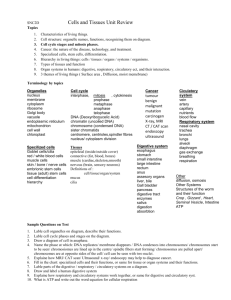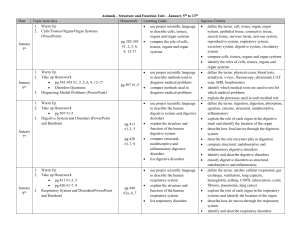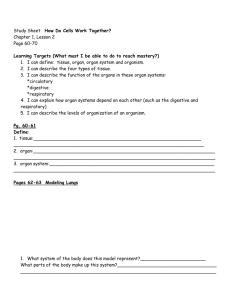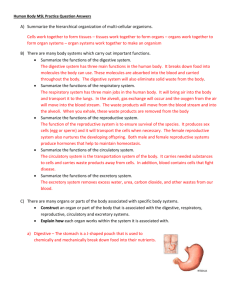Weekly Outline Jan 13-17 3C
advertisement
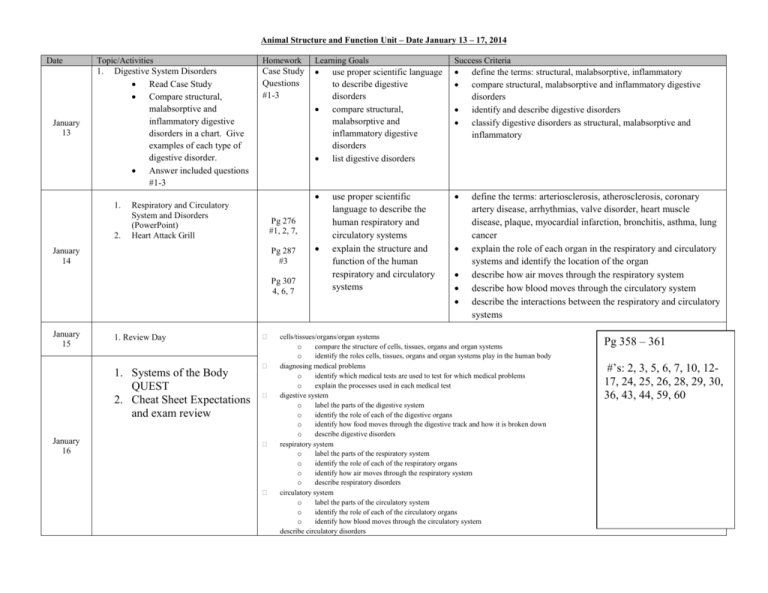
Animal Structure and Function Unit – Date January 13 – 17, 2014 Date January 13 Topic/Activities Homework Learning Goals Success Criteria 1. Case Study Questions #1-3 use proper scientific language to describe digestive disorders compare structural, malabsorptive and inflammatory digestive disorders list digestive disorders use proper scientific language to describe the human respiratory and circulatory systems explain the structure and function of the human respiratory and circulatory systems Digestive System Disorders Read Case Study Compare structural, malabsorptive and inflammatory digestive disorders in a chart. Give examples of each type of digestive disorder. Answer included questions #1-3 1. 2. Respiratory and Circulatory System and Disorders (PowerPoint) Heart Attack Grill Pg 276 #1, 2, 7, January 14 Pg 287 #3 Pg 307 4, 6, 7 January 15 1. Review Day 1. Systems of the Body QUEST 2. Cheat Sheet Expectations and exam review January 16 define the terms: structural, malabsorptive, inflammatory compare structural, malabsorptive and inflammatory digestive disorders identify and describe digestive disorders classify digestive disorders as structural, malabsorptive and inflammatory define the terms: arteriosclerosis, atherosclerosis, coronary artery disease, arrhythmias, valve disorder, heart muscle disease, plaque, myocardial infarction, bronchitis, asthma, lung cancer explain the role of each organ in the respiratory and circulatory systems and identify the location of the organ describe how air moves through the respiratory system describe how blood moves through the circulatory system describe the interactions between the respiratory and circulatory systems cells/tissues/organs/organ systems o compare the structure of cells, tissues, organs and organ systems o identify the roles cells, tissues, organs and organ systems play in the human body diagnosing medical problems o identify which medical tests are used to test for which medical problems o explain the processes used in each medical test digestive system o label the parts of the digestive system o identify the role of each of the digestive organs o identify how food moves through the digestive track and how it is broken down o describe digestive disorders respiratory system o label the parts of the respiratory system o identify the role of each of the respiratory organs o identify how air moves through the respiratory system o describe respiratory disorders circulatory system o label the parts of the circulatory system o identify the role of each of the circulatory organs o identify how blood moves through the circulatory system describe circulatory disorders Pg 358 – 361 #’s: 2, 3, 5, 6, 7, 10, 1217, 24, 25, 26, 28, 29, 30, 36, 43, 44, 59, 60



